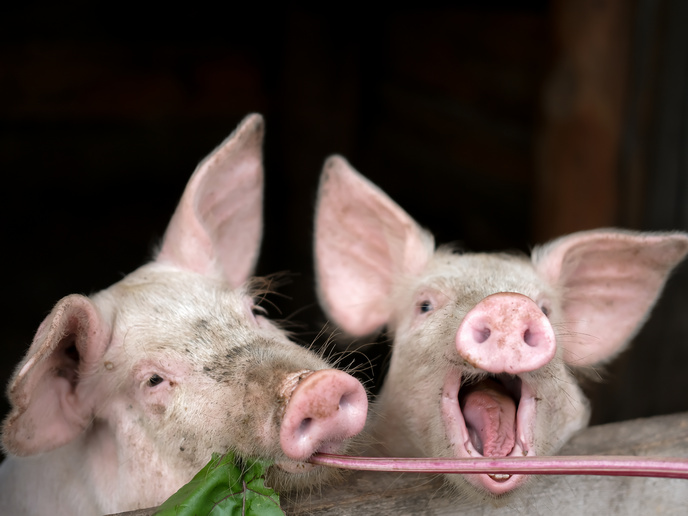Getting to the bottom of animal discomfort
As a widely recognised issue affecting animal welfare, animal discomfort is frequently mentioned in research, legislation and ethical guidelines. However, the way it is defined across these documents is vague and inconsistent, making it difficult to quantify it and align ethical standards in research. It also makes it difficult to objectively assess animal welfare. To help address these issues, the EU-funded PIGWEB project has published a policy brief advocating the use of a standardised definition of animal discomfort across different animal species, contexts and disciplines.
Defining discomfort
Identifying discomfort is a key step in the drive to meet the rising demand for more sustainable and welfare-oriented livestock production. Using the domesticated pig as a model, PIGWEB researchers carried out a concept analysis to come up with the following definition for animal discomfort: “short- or long-lived negative affective state featured by physical, physiological and/or mental components, induced by internal or external stimuli, ranging from mild to severe, potentially occurring together with other negative affective states, and leading to avoidance or attempt to alleviate the source of uneasiness.” The team analysed a total of 118 relevant documents published in English that defined and/or measured discomfort in pigs and other animals. Described in detail in a study published in the journal ‘Livestock Science’, the analysis revealed that animal discomfort intersects in three domains: physical and sensory discomfort caused by wounds, injuries, loud noises, extreme temperatures and strong odours; physiological discomfort caused by metabolic imbalances, infections and nutrient deficiencies; and mental discomfort such as anxiety, fear, frustration or boredom.
Three recommendations for better animal welfare
Based on the research findings, the PIGWEB policy brief recommends incorporating a standardised definition of animal discomfort into animal welfare legislation. According to the authors, this “will create consistent guidelines for welfare audits and ethical reviews of animal research” and “will also ensure global comparability of research while adapting to specific legal contexts across jurisdictions.” The brief also proposes that a multidisciplinary task force be formed, made up of experts in veterinary science, animal behaviour, animal welfare and ethics, as well as legal professionals and policymakers. The group will be tasked with “synthesising existing research on animal discomfort across species; and defining key physiological and behavioural indicators of discomfort.” Last but not least, the brief recommends improving animal welfare monitoring through validated discomfort metrics (e.g. behavioural observation and physiological markers) to standardise assessments and make transparent reporting of discomfort levels possible in research. “This ensures better compliance with ethical standards and enhances overall animal welfare practices.” To further its efforts in strengthening research that will lead to sustainable pig production, PIGWEB (An infrastructure for experimental research for sustainable pig production) has launched two new surveys to gather insights from users of research infrastructures. These insights will be used to improve the services provided by the infrastructures. For more information, please see: PIGWEB project website
Keywords
PIGWEB, pig, animal, animal welfare, animal discomfort, livestock



